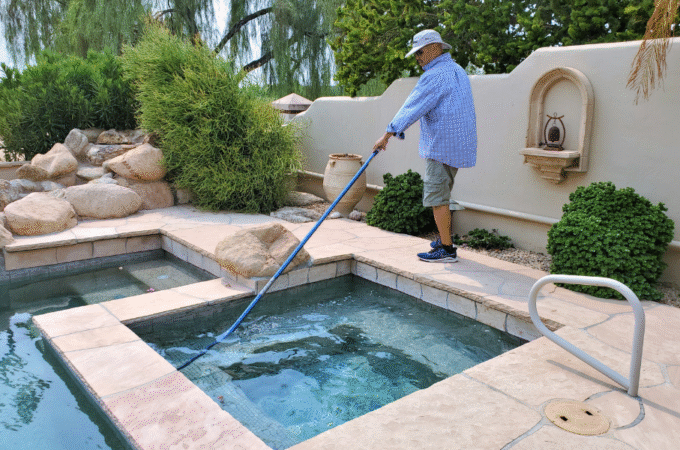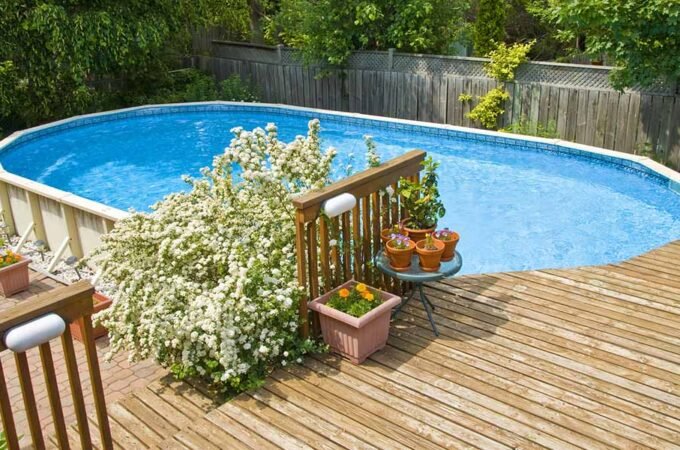
Maximizing Pool Cleaner Efficiency with Smart Water Circulation Techniques
A clean pool relies on more than just high-performing pool cleaners; the way water moves through your pool plays a critical role in ensuring debris is effectively captured and filtered. Smart water circulation techniques can significantly enhance the performance of robotic, suction-side, or pressure-side cleaners, especially in pools with challenging layouts or heavy debris loads. By optimizing return jet placement, managing pump schedules, and leveraging skimmers, you can eliminate dead zones, improve cleaner navigation, and reduce energy and water waste. This guide explores practical strategies for maximizing pool cleaner efficiency through water circulation, offering actionable tips to keep your pool sparkling clean with minimal effort.
Table of Contents
ToggleThe Importance of Water Circulation in Pool Cleaning
Water circulation is the backbone of effective pool cleaning. It ensures debris is carried toward the cleaner’s intake or the pool’s filtration system, prevents sediment from settling in stagnant areas, and supports cleaner navigation. Poor circulation creates “dead zones”—areas with weak water flow where debris accumulates, such as corners, steps, or near water features. These zones can frustrate even the best cleaners, leading to missed spots or increased wear on equipment. By optimizing circulation, you enhance your cleaner’s ability to collect debris, improve water clarity, and reduce the need for excessive cleaning cycles or manual intervention.
Circulation is driven by the pool’s pump, return jets, and skimmers, which work together to create a continuous flow of water. Smart adjustments to these components can make your cleaner more effective, save energy, and extend equipment lifespan. Below, we outline techniques to achieve optimal water flow for different pool types and cleaner systems.
Step 1: Optimize Return Jet Placement
Return jets, which direct filtered water back into the pool, are critical for creating effective circulation patterns. Poorly positioned jets can leave areas stagnant, reducing cleaner efficiency. To maximize flow:
- Angle Jets Downward: Adjust return jets to point downward at a 45-degree angle to create a sweeping motion across the pool floor. This pushes debris toward the cleaner’s path, especially in deep ends or near steps.
- Target Dead Zones: Identify areas where debris collects (e.g., corners, behind ladders, or near curves in freeform pools). Angle one or more jets toward these zones to ensure water movement. For example, in a kidney-shaped pool, direct jets along the inner curve to prevent sediment buildup.
- Use Adjustable Jets: If your pool has fixed jets, consider upgrading to adjustable eyeball jets (costing $10–$20 each) for precise flow control. Rotate jets periodically to cover different areas, especially in irregular-shaped pools.
- Balance Flow: For pools with multiple jets, ensure they work together to create a circular or spiral flow pattern. Avoid pointing all jets in one direction, as this can create turbulence that traps debris.
Tip: Check jet alignment weekly, as vibrations or swimmer activity can shift them. After adjusting, run the cleaner and observe if debris is moving toward the skimmer or cleaner’s intake.
Step 2: Manage Pump Schedules for Efficiency
The pool pump drives water flow, supporting both the cleaner and overall circulation. Running the pump too long wastes energy, while insufficient runtime leaves debris suspended. To optimize:
- Calculate Turnover Time: Aim for one full water turnover daily (all pool water passing through the filter). For a 10,000-gallon pool with a 20 GPM pump, this takes 8 hours (10,000 ÷ 20 ÷ 60 = 8.33 hours). Smaller pools may need 4–6 hours; larger or complex pools may require 8–10 hours.
- Match Cleaner Type:
-
- Robotic Cleaners: These have built-in pumps, so run the pool pump only 4–6 hours daily to maintain circulation, saving energy. Schedule cleaner cycles during pump runtime for optimal flow.
- Suction-Side Cleaners: Require the pump to run during cleaning (1.5–3 hours per cycle). Set the pump to 6–8 hours daily, aligning cleaner use with peak circulation.
- Pressure-Side Cleaners: Need a booster pump (25–35 GPM). Run the pool pump 6–8 hours and the booster pump only during cleaning cycles (2–3 hours) to conserve energy.
- Use Variable-Speed Pumps: These adjust flow to match needs, saving up to 70% on energy (1,000–1,500 kWh annually) compared to single-speed pumps. Set low speed for circulation and medium/high for cleaning cycles.
- Off-Peak Scheduling: Run pumps and cleaners during cooler hours (e.g., 6–8 AM or 8–10 PM) to reduce motor strain and take advantage of lower electricity rates in time-of-use areas.
Tip: Monitor the pump’s pressure gauge. A rise of 8–10 psi above normal (e.g., from 15 to 23 psi) indicates a clogged filter, which reduces flow. Backwash or clean the filter to restore circulation.
Step 3: Leverage Skimmers for Debris Control
Skimmers remove floating debris before it sinks, reducing the cleaner’s workload and preventing clogs. To maximize their effectiveness:
- Ensure Proper Skimmer Flow: Adjust the skimmer valve to balance suction between the skimmer and cleaner (e.g., 60% cleaner, 40% skimmer for suction-side models). This ensures debris is pulled into the skimmer while supporting cleaner performance.
- Clean Skimmer Baskets: Empty baskets daily during heavy debris seasons (e.g., autumn leaf fall) to maintain suction. A clogged basket reduces flow, starving the cleaner and creating dead zones.
- Add a Leaf Canister: For suction-side cleaners, attach a fine-mesh canister ($20–$50) to trap large debris like leaves or twigs before they reach the pump or filter, improving circulation and cleaner efficiency.
- Position Skimmers Strategically: If installing a new skimmer, place it opposite return jets to create a cross-pool flow, pulling debris toward the skimmer. For existing setups, ensure jets direct debris toward the skimmer’s location.
Tip: Use a DIY mesh cover (e.g., a fine laundry bag secured with zip ties) over the skimmer basket during heavy debris periods to trap smaller particles without frequent emptying.
Step 4: Integrate Circulation with Cleaner Settings
Tailor your cleaner’s settings to complement optimized water flow:
- Robotic Cleaners: Program shorter cycles (1–1.5 hours) for light debris with strong circulation, or longer cycles (2–3 hours) for heavy debris or complex pools. Use floor-only modes for deep ends where debris settles due to downward jet flow.
- Suction-Side Cleaners: Adjust hose length to match pool dimensions, preventing tangles that disrupt flow. Ensure the pump’s flow rate (15–20 GPM minimum) supports both cleaner suction and skimmer function.
- Pressure-Side Cleaners: Set the booster pump to 25–35 GPM and use a sweep tail (if included) to agitate debris in dead zones, aligning with jet-driven flow patterns.
Tip: After adjusting jets or pump schedules, run the cleaner and observe its path. If it misses areas, tweak jet angles or increase pump runtime to enhance flow.
Step 5: Supplement with Manual Techniques
Even with optimized circulation, manual cleaning enhances results in tricky areas:
- Skim Daily: Use a fine-mesh net to remove floating debris (5–10 minutes), especially near dead zones, to support skimmer and cleaner efficiency.
- Brush Weekly: Brush corners, steps, or curves with a soft-bristled brush (for vinyl) or nylon brush (for concrete) to loosen debris, allowing jets to carry it toward the cleaner or skimmer.
- Vacuum as Needed: Use a handheld vacuum ($50–$150) for precise cleaning of stagnant areas, supplementing the cleaner’s work in complex layouts.
Budget-Friendly Circulation Hacks
Keep costs low while optimizing flow:
- DIY Jet Adjustments: Reposition jets yourself to avoid service fees ($50–$100). Use a pool pole to gently nudge fixed jets if needed.
- Reusable Filters: Clean skimmer baskets and cleaner filters with a vinegar-water soak (1:3 ratio) monthly to extend life, saving $20–$50 on replacements.
- Energy-Saving Pumps: Upgrade to a variable-speed pump ($500–$1,000) for long-term savings ($100–$300 annually) over single-speed models.
Troubleshooting Circulation Issues
If circulation isn’t improving cleaner performance:
- Dead Zones Persist: Re-angle jets or add a temporary jet (e.g., a wall-mounted return, $20–$30) to target stagnant areas.
- Weak Suction: Check for air leaks in hoses or skimmer connections. Clean pump strainers and filters to restore flow.
- Clogged Systems: Empty skimmer baskets and backwash the pool filter during heavy debris seasons. Use a leaf canister to prevent clogs.
- Cleaner Misses Spots: Adjust cleaner settings (e.g., zigzag pattern for robotic models) or increase pump runtime to support navigation.
Conclusion
Smart water circulation techniques—optimizing return jets, managing pump schedules, and leveraging skimmers—can transform your best pool cleaner’s efficiency, ensuring thorough cleaning even in complex pools. By aligning water flow with cleaner settings and supplementing with manual techniques, you eliminate dead zones, reduce energy and water waste, and maintain crystal-clear water. Budget-friendly hacks like DIY jet adjustments and reusable filters keep costs low while maximizing results. With these strategies, your pool cleaner will work smarter, not harder, delivering a pristine pool with minimal environmental impact and effort.




